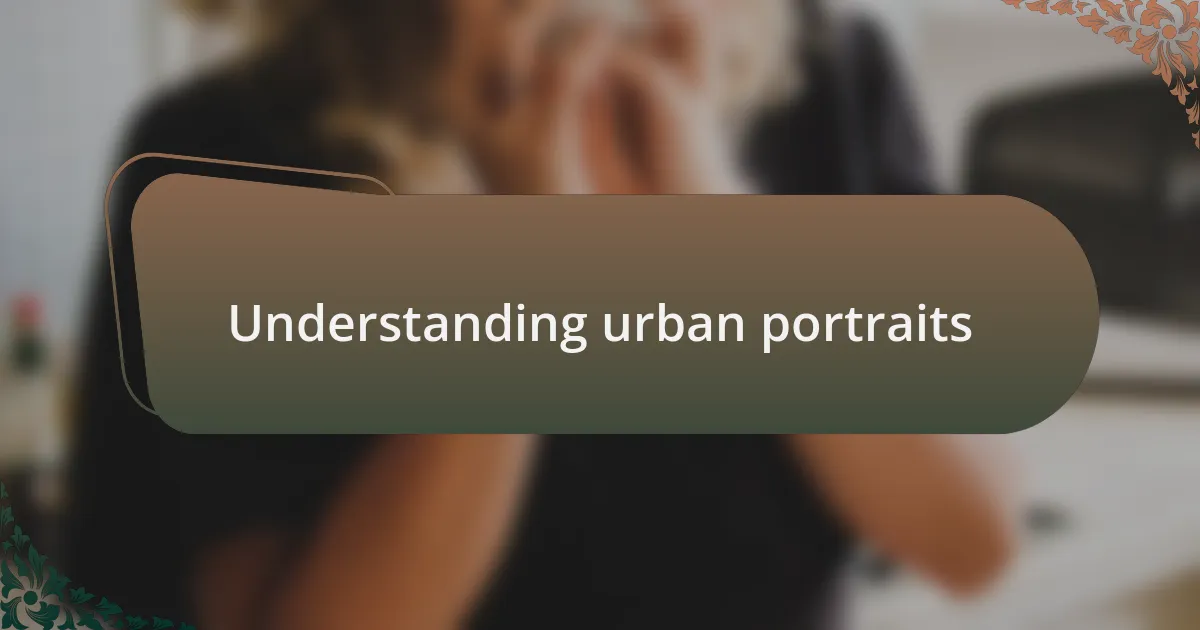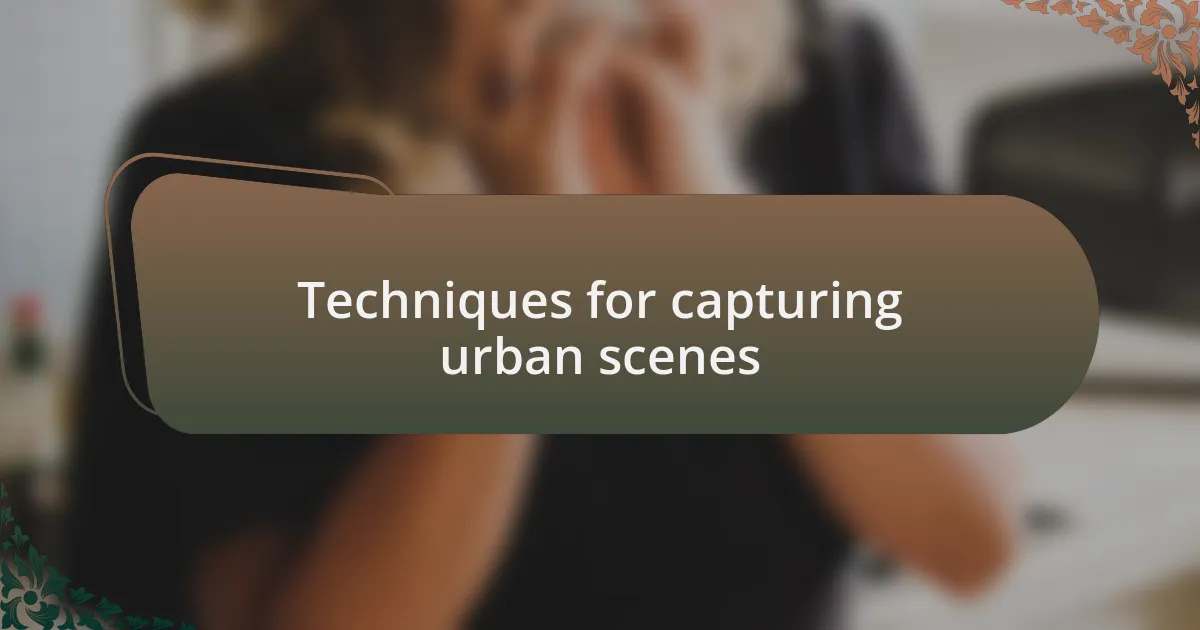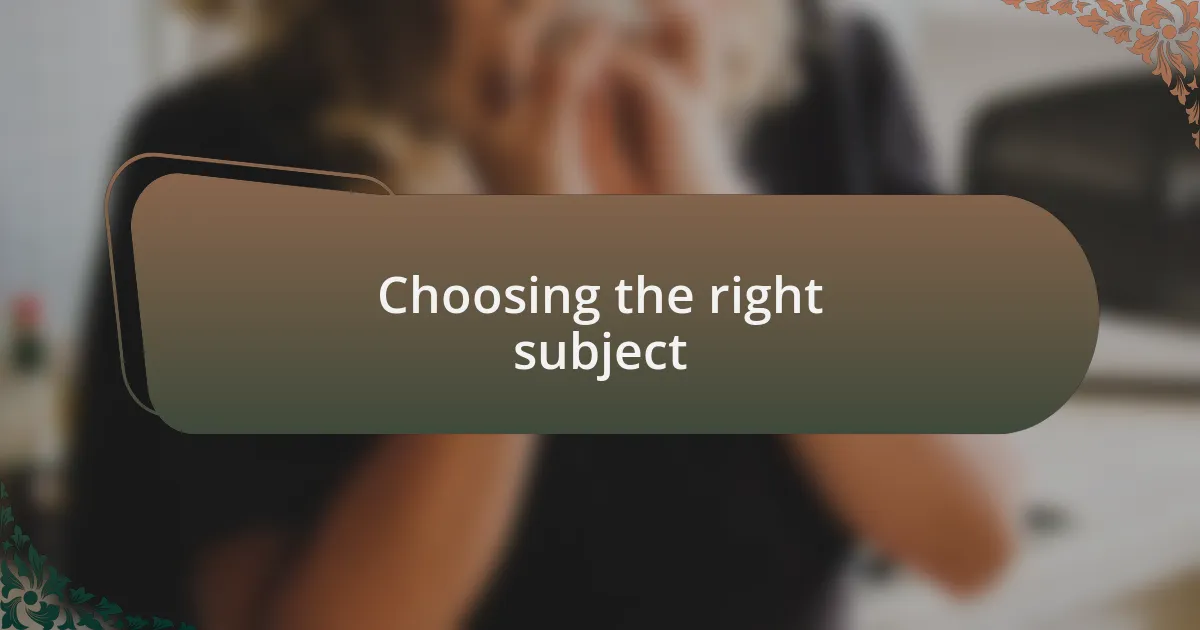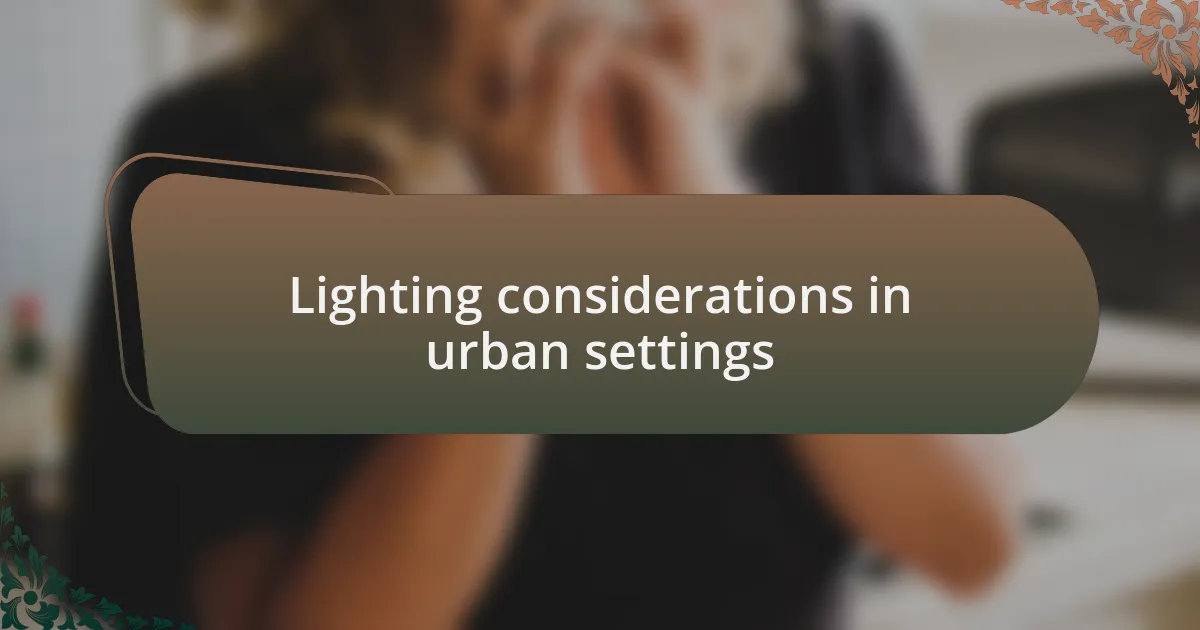Key takeaways:
- Urban portraits reflect the connection between individuals and their environments, emphasizing how settings shape identity and narrative.
- The choice of location significantly influences the mood and energy of portraits, with contrasting backgrounds enhancing the visual story.
- Lighting plays a crucial role in urban photography, with natural light during golden hours and shadows adding depth and drama to images.
- Capturing compelling subjects often involves finding those whose stories resonate with their surroundings, highlighting unexpected moments within city life.

Understanding urban portraits
Urban portraits go beyond mere images; they’re a window into the soul of a city. I remember an afternoon spent capturing the essence of street performers in a bustling square. Each expression and gesture painted a story about life in an urban setting, making me wonder how deeply our environments shape our identities.
Every urban portrait carries layers of context that are worth exploring. I once wandered through an alley adorned with murals, snapping photos of individuals interacting with this vivid backdrop. It struck me how the environment not only influences the subject but also adds richness to their narrative, inviting viewers to ponder, “What’s the story behind that smile?”
The beauty of urban portraits lies in their ability to capture fleeting moments that resonate with viewers on various levels. In one instance, I photographed a child selling flowers, her determination radiating through the frame. It made me reflect on the resilience found in urban life and how these images can challenge us to see the beauty amidst adversity.

Importance of location in portraits
The significance of location in portraits often cannot be overstated. I recall a session in an old, gritty part of town, where every crumbling brick seemed to whisper stories of yesteryear. It struck me how that setting amplified the emotions of my subject, creating a powerful visual contrast between their vibrant spirit and the weathered surroundings.
When I shot portraits in a serene park, I noticed a stark difference in the energy of the images. The lush greenery and calm atmosphere seemed to soften my subjects, revealing a side of them that felt relaxed and contemplative. Isn’t it fascinating how different settings can evoke various feelings, even shifting the personality conveyed in a single photograph?
Ultimately, location serves as a character in the portrait itself. I think back to a vibrant urban marketplace, where the hustle and bustle added a dynamic element to the portraits I captured. How does a busy backdrop change the way we perceive a subject? From my experience, it can turn a simple image into a complex narrative, rich with context and emotion.

Techniques for capturing urban scenes
Capturing urban scenes requires a keen eye for the interplay between light and shadow. I remember a late afternoon when golden sunlight sliced through the towering buildings, creating striking contrasts that added depth to my subjects. At that moment, I realized how the angle of the light could sculpt their features and bring a whole new dimension to the image. Have you ever noticed how a particular time of day can completely transform your perception of a scene?
Incorporating reflections from glass buildings or puddles after the rain can enhance the visual narrative in urban photography. One day, I was wandering through a city after a downpour, and those little reflections became unintentional collaborators in my work. It was exhilarating to discover how the mirrored images blended my subject with the urban landscape, creating layers that captivated viewers. Isn’t it intriguing how a simple puddle can turn into a storytelling device in our art?
I often find that wide-angle lenses open up new possibilities for capturing the energy of city life. On a recent shoot, I stepped back to include vibrant street art and flowing crowds in the frame. The result was a dynamic image that didn’t just feature my subject but placed them within the community’s vibrant heartbeat. How do we express the pulse of the city in our portraits? For me, it’s all about embracing the chaos and letting it inform the essence of the photograph.

Choosing the right subject
When choosing the right subject for urban portraits, I often look for individuals whose stories resonate with the environment around them. I once approached a street musician immersed in their craft, and the way their artistry intertwined with the bustling streets sparked an immediate connection. Have you ever felt that electric energy when a subject seems to embody the spirit of their surroundings?
I also pay attention to the contrasting elements between the subject and the background. I vividly recall photographing a woman in a bright yellow dress against a muted cityscape, which created a striking visual balance. This contrast not only highlights my subject but also adds layers of context. How can we use our subjects to challenge or complement the urban setting they inhabit?
Sometimes, it’s the unexpected choices that yield the most compelling portraits. During one shoot, I found myself drawn to a construction worker pausing for a break amidst the chaos. Capturing that brief moment of humanity within the city’s relentless pace brought depth to the narrative I wanted to share. Isn’t it fascinating how everyday life can reveal profound stories just waiting to be captured?

Lighting considerations in urban settings
Natural light can be a game-changer for urban portraits. I often find that shooting during the golden hour—just after sunrise or before sunset—brings out the richness of colors and soft shadows, making the city feel almost alive. Have you ever noticed how the light seems to dance off the buildings during that time?
In bustling urban environments, shadows can create drama and add texture to a photograph. I remember a day when I captured a street artist painting on the sidewalk as tall buildings cast long shadows. The interplay of light and dark not only framed my subject beautifully but also told a secret story about the contrast between creativity and the urban grind. Isn’t it amazing how shadows can lend a mood to your images?
However, artificial lighting can also offer unique opportunities. I often experiment with flash or continuous lights at night, illuminating my subjects against the urban backdrop. One time, I used a portable softbox to highlight a dancer performing on a street corner. The way the light isolated her from the chaotic surroundings created an almost ethereal presence. How do you think the choice of light transforms the narrative of your portraits?